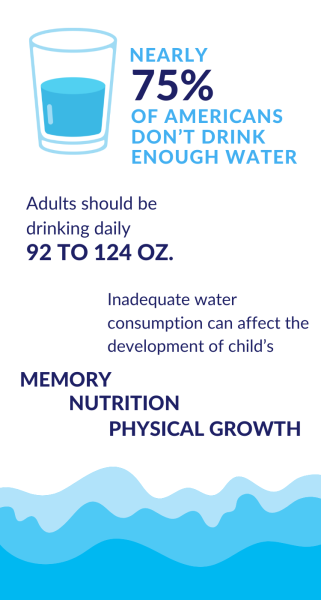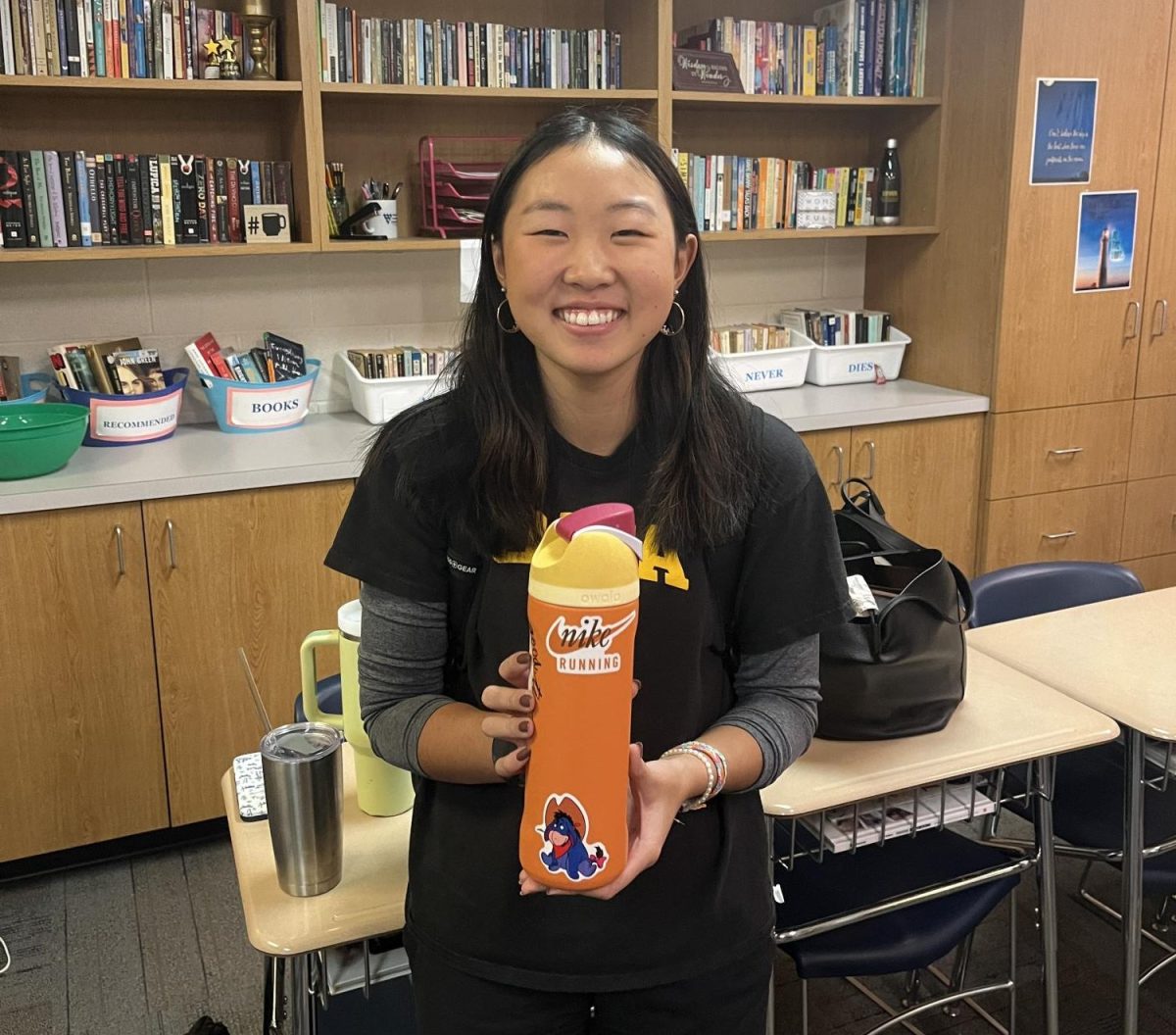American society is often criticized for supporting unhealthy lifestyle choices. The lack of proper hydration is one of these problems, significantly impacting the health of many Americans.
The average adult should be drinking between 11.5 to 15.5 cups of water per day, or 92 to 124 oz. However, the average American adult only consumes 44 oz., which is well below the recommendation.
Dr. Christopher Posey explained the trend in his unit at Genesis Urgent Care. “I have people who used to drink eight to ten glasses of water a day, which they are supposed to do, but they seldom do that anymore,” Dr. Posey noted.
Water is crucial to physical health, providing nutrients to the body and protecting joints and organs. Proper hydration can also contribute to weight loss and help reduce water weight – extra water held on to by the body to supplement a lack of water intake–which could be a factor of America’s rising obesity rates.
“The less [water] you drink and the more dehydrated you become, your kidneys start to lose function,” explained Dr. Posey. “They try to retain as much fluid in your body as possible, and this leads to a back up of chemicals that normally the kidneys would excrete from your body, but instead, they tend to stay in your body and can hurt multiple organs.”
Nearly 75% of Americans are dehydrated while only 37% of Europeans are dehydrated. While not necessarily due to the availability of water, dehydration could be aided by more public water fountains.
European cities generally have more public water fountains, especially in high-traffic areas, which help encourage proper hydration. The lack of such public amenities in American cities means many Americans are forced to rely on bottled water while on the go.

But no one uses themーat least not for their original purpose.
America’s consumerist mindset has transformed the necessity of hydration into a market for the vessels. Society’s water bottle obsession has been taking over social media, creating several huge new trends. The original tumbler sensation was the Hydro Flask, which came in the wake of “VSCO girls.” Initially, using a Hydro Flask symbolized environmental consciousness, but it eventually inspired the idea that a water bottle could be an accessory.
Then entered the Stanley. With its enormous popularity on TikTok, Stanleys quickly became the item to buy in order to follow the trends.
In conjunction with Stanley’s growth, WaterTok became hugely popular. TikTok influencers began promoting “Make my drink with me” videos, ranging from “Make my coffee” to “Make my water.” This content promotes adding sugar, syrups and flavor packets to water every day, which continues to significantly deteriorate society’s drinking habits.
With a plethora of sugary additives, the idea of drinking more water has been transformed into a fad of consuming juice-like concoctions, which introduces negative side effects plain water doesn’t cause. Overdoing the water “recipes” with three or four different flavors in one Stanley of water dilutes the purpose of drinking more water.
Senior Becca Hahm has noticed this trend. “There’s definitely a strong correlation between people buying Stanleys and people drinking sugary or carbonated drinks. Lots of people use tons of unhealthy flavor packets in their Stanleys and end up with liquid sugar instead of water,” observed Hahm.
The rise of TikTok tumblers has made its way to the youth, and teenagers, especially students, are often seen with these water bottles in hand.
Yes, teenagers carry around Stanleys, but does this mean students are trying to stay hydrated?
In short, no. These trendy water bottles are often mere accessories, giving the illusion of hydration. Realistically, most Stanleys contain the aforementioned sugary drinks and carbonated beverages like BUBBL’R or Dr. Pepper. America’s dehydration culture has replaced water and its necessity for health with “fun” drinks that follow the trends.
Americans’ adherence to these kinds of drinks exposes unhealthy priorities and makes it difficult for people of all ages to follow forgotten health guidelines.
In schools, some teachers have opted to ban water bottles because of their bulkiness and popularity, which can cause distractions. With their narrow base, Stanleys often tip over and spill in classrooms, creating further hygienic concerns with the non-water drinks in so many students’ water bottles.
But there are few options for students to drink water at school otherwise. Water fountains are few and far between, just like America in general, and it’s a hassle to get a drink from them during the school day.
“It’s really impractical to get up and leave in the middle of class just to get a sip of water,” Hahm said. “Sometimes you even have to fight the crowds. I definitely wouldn’t drink as much water as I do if I didn’t bring my own water bottle to school.”
Solutions to students’ dehydration are not difficult to implement. Drinking fountains in schools improve students’ hydration and reduce the rate of obesity by 31%. The study also noted the lack of discussion of healthy drinks in classrooms with only about 30% of students confidently reporting that a discussion had occurred in class.
While the effects of dehydration on health are concerning at all ages, they are especially troubling for the youth.
Young people’s development depends on the amount of water they drink. Even mildly inadequate water consumption can negatively affect a child’s memory, immune system and physical growth. Youth need even more water than adults do, so the unhealthy nature of water consumption trends set by elders is multiplied in the lives of young people.
With a significant percentage of Americans affected by dehydration, the health of the nation is under continual duress, but it can be improved by addressing the root causes.










